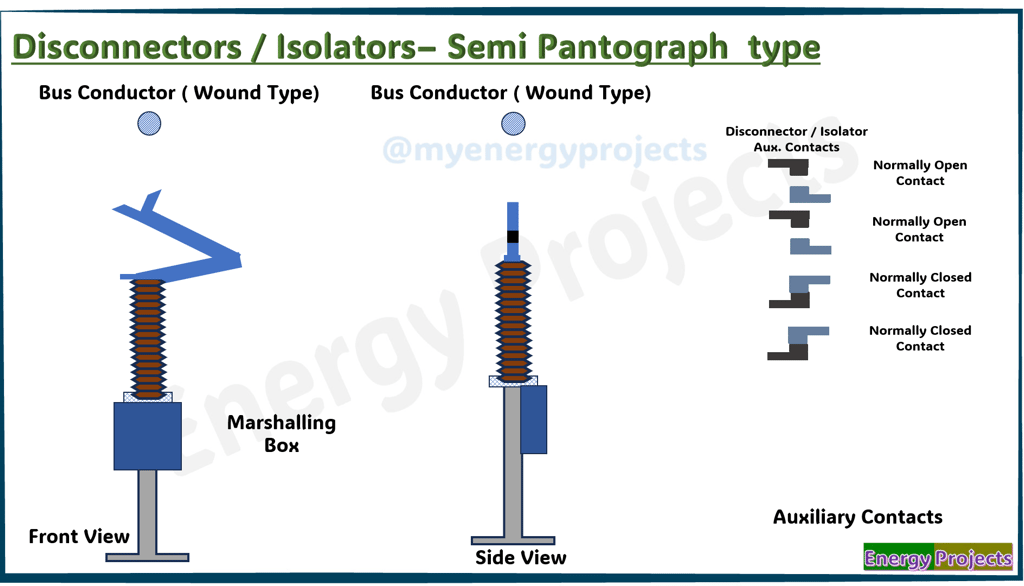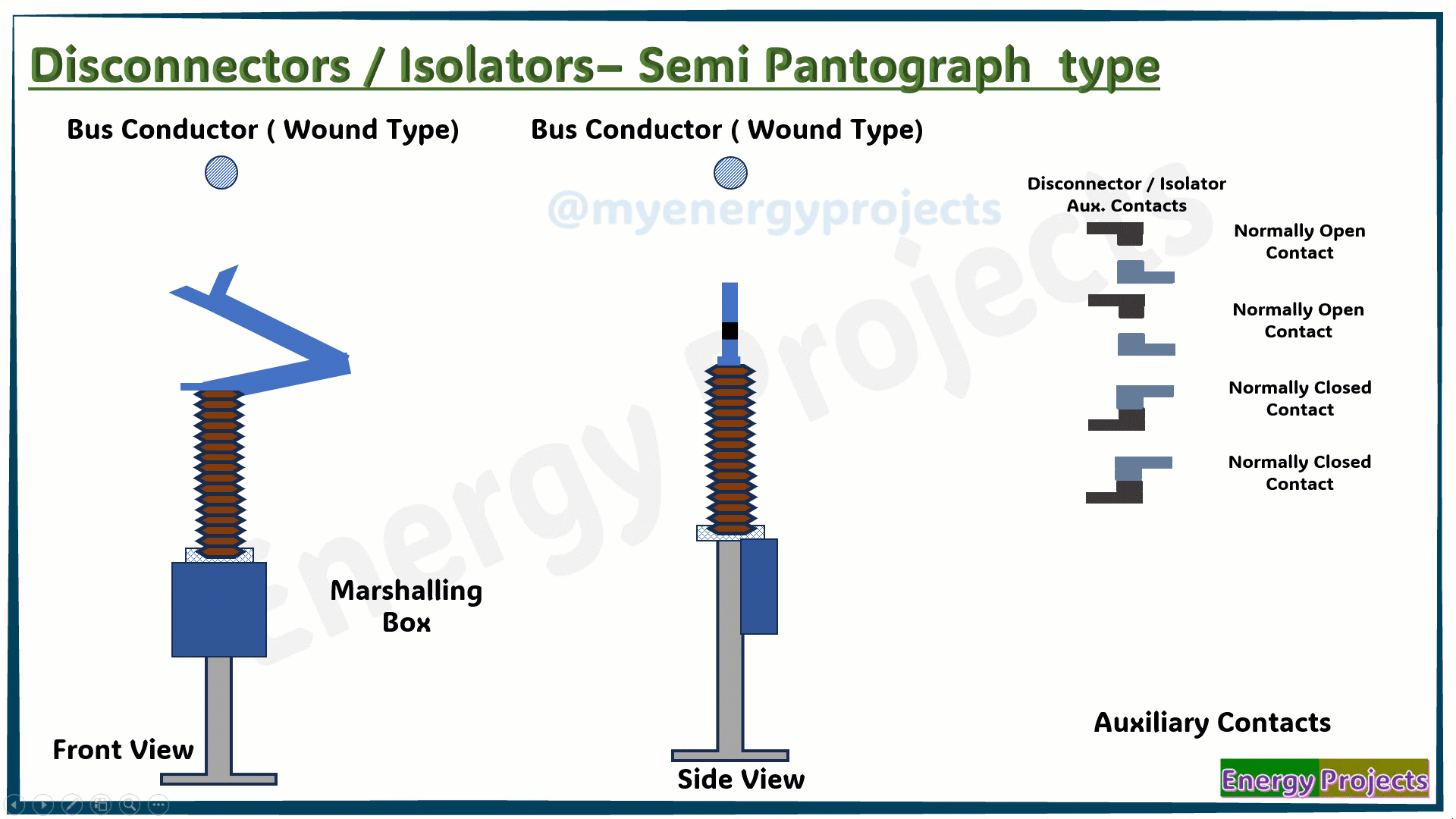05.Semi Pantograph type Disconnectors
Track Sequence of Engineering
A Semi Pantograph Disconnector is used in high-voltage systems to isolate electrical circuits safely. It operates using a vertically moving, articulated arm that engages or disengages with a fixed contact. This design is especially suitable for substations with limited horizontal space, offering a compact and efficient solution. The device ensures a clearly visible isolation gap for enhanced safety and maintains proper phase-to-phase and phase-to-ground clearances. It is known for its reliable mechanical performance and straightforward maintenance. Depending on system needs, operation can be manual or motor-driven. The Semi Pantograph type is widely preferred for its space efficiency and robust design.
Advantages
Provides a clear vertical isolation gap for improved safety and visibility.
Compact footprint makes it suitable for substations with limited horizontal space.
Asymmetrical but efficient design allows ease of installation and maintenance.
Reliable operation with a well-balanced mechanical structure.
Ideal for high-voltage outdoor use due to good clearance and compactness.
Disadvantages
Requires sufficient vertical clearance, which may limit use in height-constrained areas.
Exposure of the moving arm to environmental conditions can affect long-term durability.
Requires precise movement and alignment for proper contact engagement.
Must be operated only when the circuit is fully de-energized, as it cannot break load or fault current.
Operation:
The Semi Pantograph Disconnector operates by moving a single articulated arm vertically or at an angle to disconnect from the fixed contact and break the circuit. It must only be operated when the circuit is de-energized to ensure safe isolation. Please note that the disconnector moves in the vertical direction during operation.
Auxiliary Contacts :
Auxiliary contacts are secondary switching contacts used in conjunction with primary switching devices like disconnectors or circuit breakers. They provide status signals (open or closed) to control systems or indicator panels. These contacts do not carry load current but help in automation and monitoring. They are essential for interlocking, safety logic, and remote supervision. The number of NC, NO , NOC ,NCO depends based on the specific requiremnets. You can see the operation of the Auxiliary contacts .




